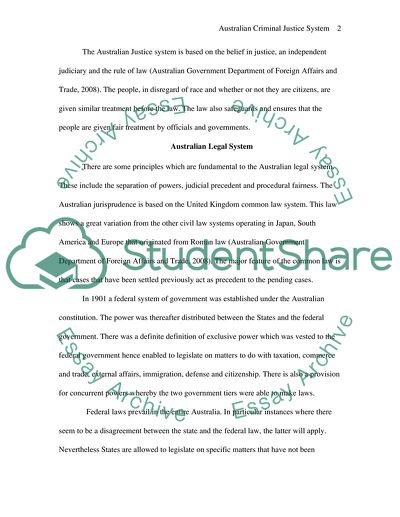Cite this document
(“Australian Criminal Justice System, the Belief in Justice, an Independ Essay”, n.d.)
Australian Criminal Justice System, the Belief in Justice, an Independ Essay. Retrieved from https://studentshare.org/law/1726445-8220when-all-is-said-and-done-the-criminal-justice-system-in-australia-is-about-as-fair-and-effective-as-we-have-any-right-to-expect8221-where-do-you-stand-in-relation-to-this-statement-and-explain-why
Australian Criminal Justice System, the Belief in Justice, an Independ Essay. Retrieved from https://studentshare.org/law/1726445-8220when-all-is-said-and-done-the-criminal-justice-system-in-australia-is-about-as-fair-and-effective-as-we-have-any-right-to-expect8221-where-do-you-stand-in-relation-to-this-statement-and-explain-why
(Australian Criminal Justice System, the Belief in Justice, an Independ Essay)
Australian Criminal Justice System, the Belief in Justice, an Independ Essay. https://studentshare.org/law/1726445-8220when-all-is-said-and-done-the-criminal-justice-system-in-australia-is-about-as-fair-and-effective-as-we-have-any-right-to-expect8221-where-do-you-stand-in-relation-to-this-statement-and-explain-why.
Australian Criminal Justice System, the Belief in Justice, an Independ Essay. https://studentshare.org/law/1726445-8220when-all-is-said-and-done-the-criminal-justice-system-in-australia-is-about-as-fair-and-effective-as-we-have-any-right-to-expect8221-where-do-you-stand-in-relation-to-this-statement-and-explain-why.
“Australian Criminal Justice System, the Belief in Justice, an Independ Essay”, n.d. https://studentshare.org/law/1726445-8220when-all-is-said-and-done-the-criminal-justice-system-in-australia-is-about-as-fair-and-effective-as-we-have-any-right-to-expect8221-where-do-you-stand-in-relation-to-this-statement-and-explain-why.


